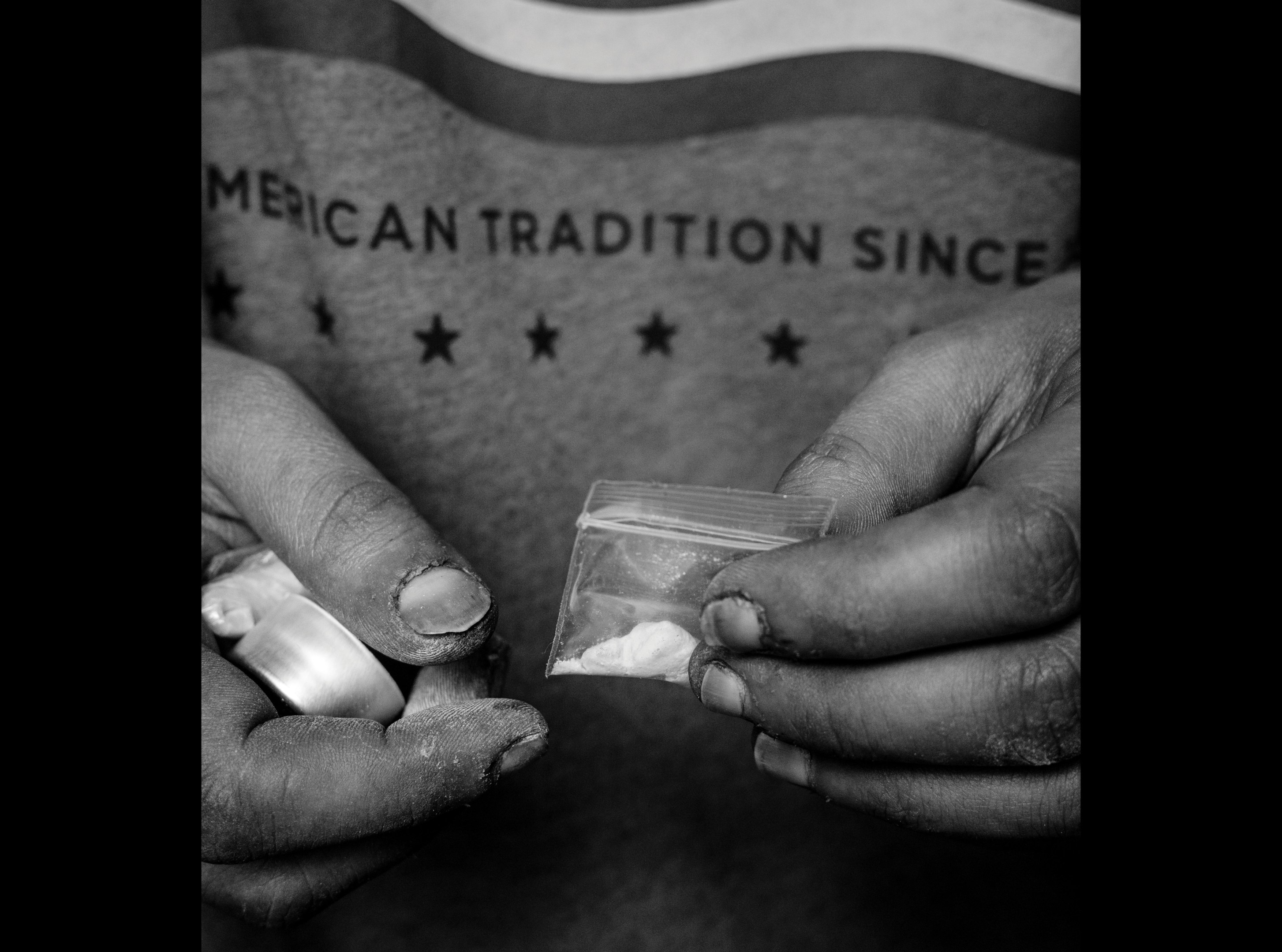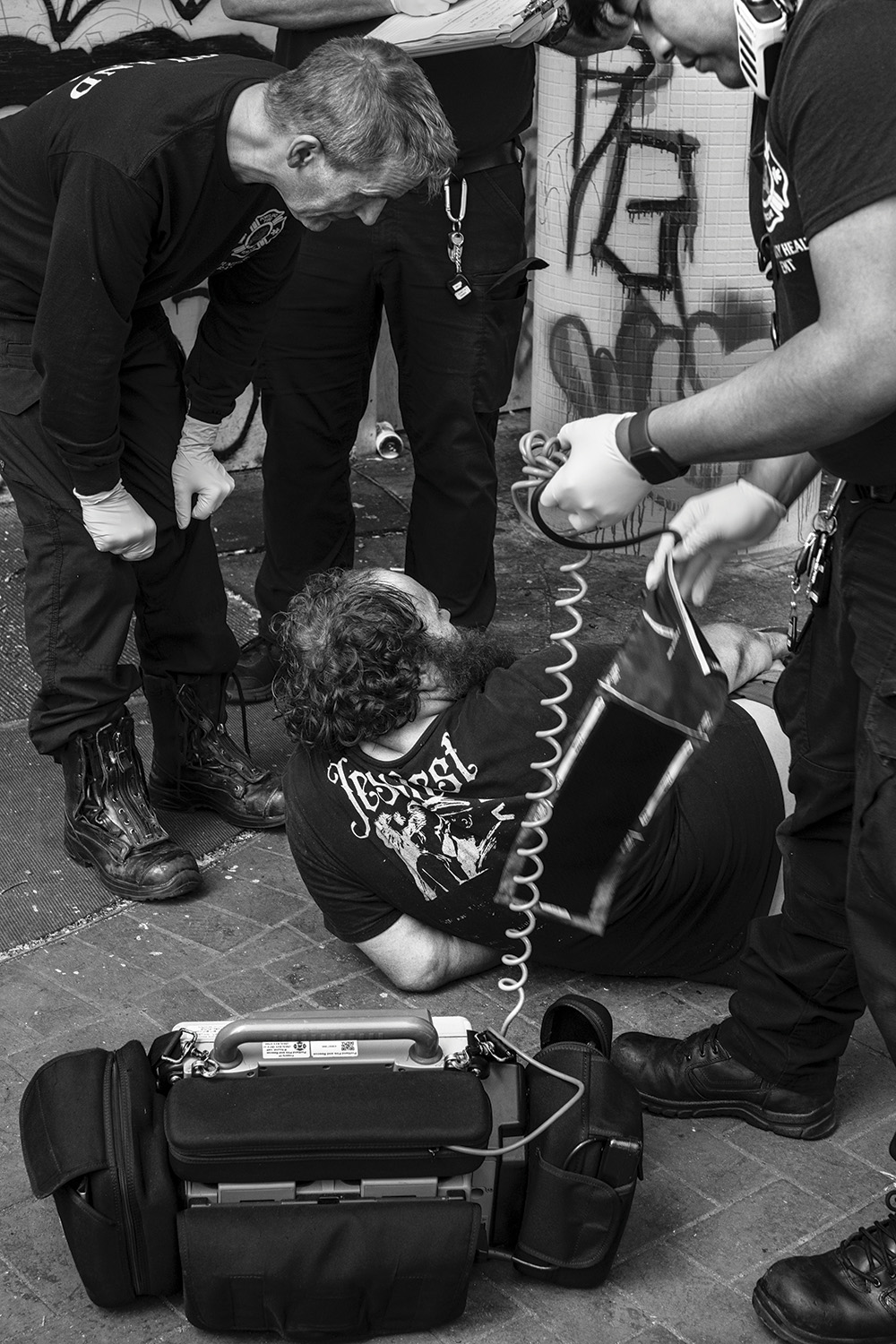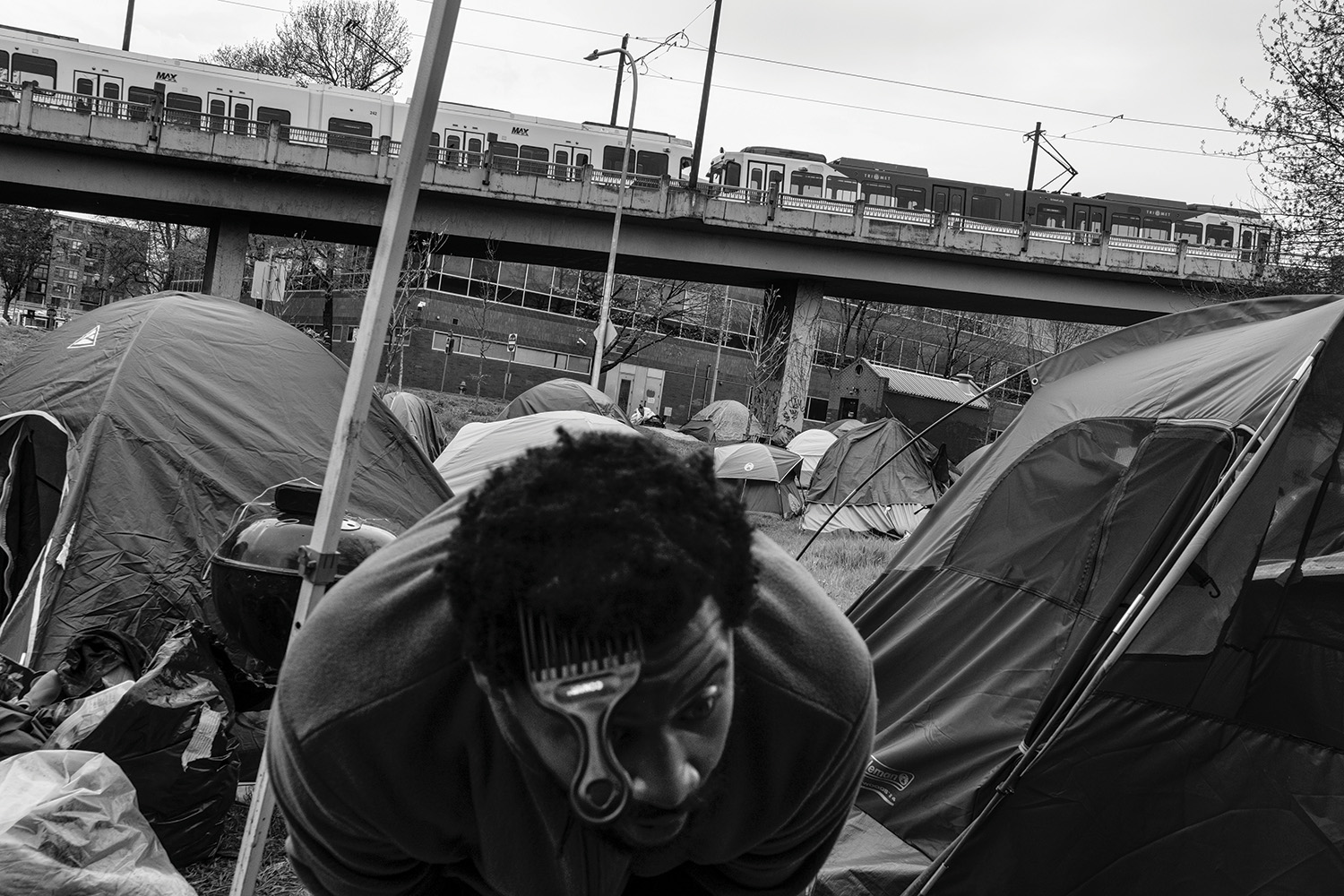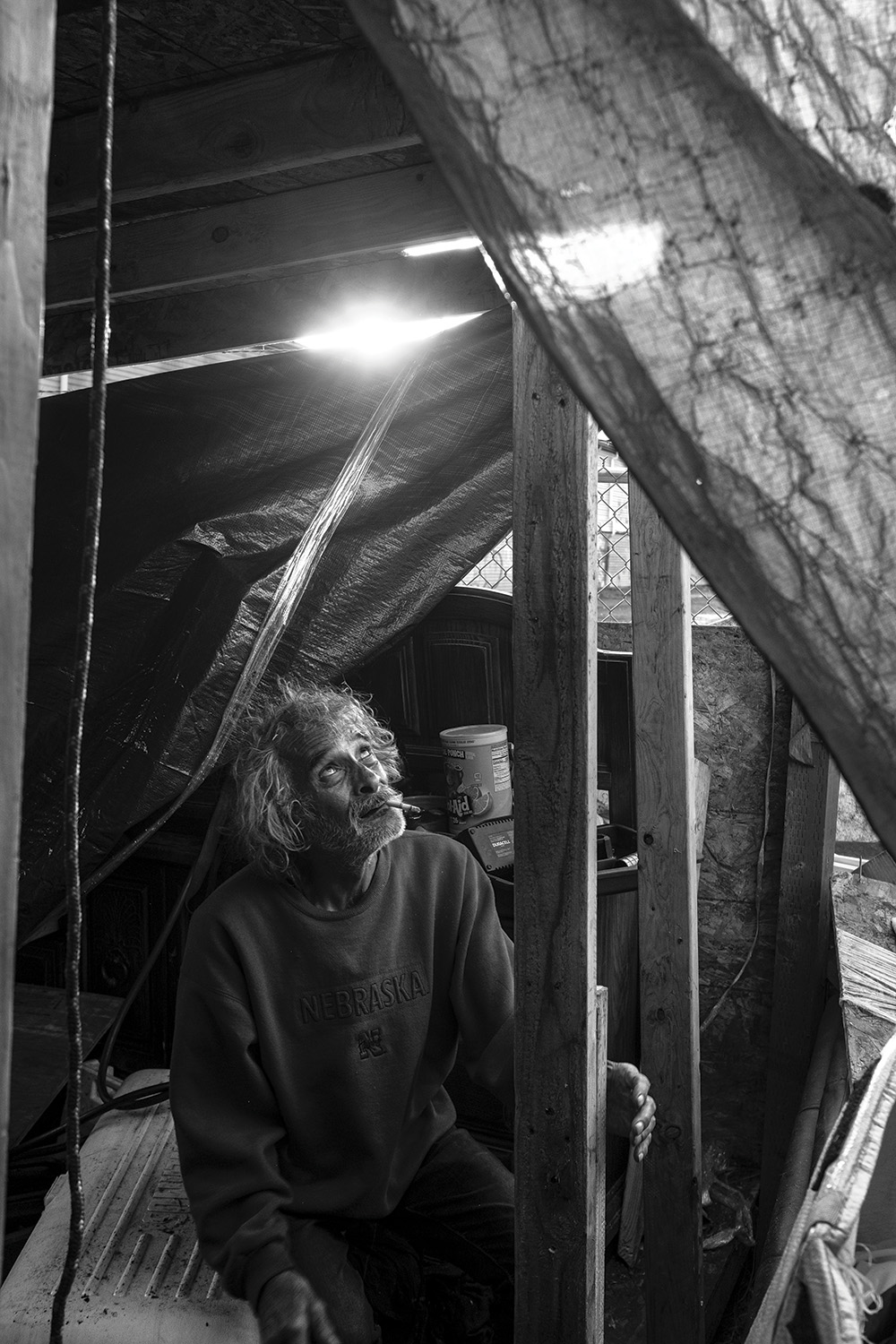The litter in Portland is different. Every city has its share of trash, food wrappers, and cigarette butts ground into the sidewalks. But in Portland, particularly in Old Town just west of the Burnside Bridge, the trash is clothing. A wet shirt, crumpled on the street. A trail of grimy socks and underwear at the bus stop.
This is the epicenter of Oregon’s addiction crisis, where drug overdoses have quadrupled in the past five years. More than 3,500 people have died from overdoses in the state since 2020. That was the year voters overwhelmingly approved Measure 110, a law decriminalizing the possession of small amounts of hard drugs like heroin, cocaine, and methamphetamine. Supporters believed it would neutralize an unfair stigma around drug addiction and reduce over-incarceration.
After nearly three years of spiking overdose rates, state lawmakers recently reversed course. Health officials, however, said they expect the number of overdose deaths to keep growing. Decriminalization didn’t encourage more people into recovery, and it didn’t improve Oregon’s addiction recovery infrastructure. In fact, many Christian recovery programs saw a drop in the number of people seeking their help.
Why didn’t decriminalization work? What can be done now, with overdose deaths rising?
After the state enacted a bill to recriminalize hard drug possession in September, ministry leaders in Portland are asking these questions and hoping the government will let them be a part of the solution.
When I visited Portland earlier this year, drug recriminalization had yet to take effect. I watched a man on the sidewalk light up methamphetamine in a glass tube in the middle of the afternoon. Others smoked what sources told me was likely fentanyl out of aluminum foil.
During the decriminalization under Measure 110, Oregonians caught with these substances could either accept a $100 citation or call a state-run hotline designed to connect them to recovery resources. They didn’t have to follow through with recovery to avoid the fine.
By late 2023, police had stopped issuing the citations, which proved unenforceable. Among the roughly 8,700 tickets they issued over three years, only 300 people cited ever called the recovery hotline. There’s no data tracking whether any of them ultimately sought treatment.
“Our streets went from typical Portland to a disaster almost overnight,” said Lance Orton, executive director of CityTeam, a ministry to people struggling with addiction and homelessness downtown. “We just started seeing overdoses like crazy.”
Orton said Portlanders began carrying around Narcan (a brand name of naloxone), a nasal spray that can counteract an overdose, in case they came upon someone who needed reviving. Open drug use skyrocketed, he said, and people who’d heard drugs were now legal in Oregon began moving in from out of state. Measure 110 was successful in one regard: The social stigma against hard drugs was disappearing.
 Jordan Gale
Jordan GaleWhile the latest national figures show that the overall uptick in drug deaths is finally beginning to reverse course, Oregon remains an exception to the trend. Overdose deaths in the state were up 22 percent last year.
When Oregon Gov. Tina Kotek signed the bill to recriminalize drugs last April, she said Measure 110 failed because it was underfunded and badly implemented. It was also poorly timed, right around the 2020 COVID-19 pandemic and during massive protests over the death of George Floyd. That same year, fentanyl—a cheap, synthetic opioid that the Centers for Disease Control says is 50 times more potent than heroin—was just reaching the streets of Oregon.
Officials blamed a lack of recovery and treatment options. A state report released this year cited a shortage of 3,000 beds. But ministry leaders say at least a few hundred recovery beds aren’t included in the state’s official tally: the ones housed in their own ministries.
Union Gospel Mission (UGM), a homeless shelter and addiction recovery ministry located in Portland’s Old Town, houses up to 40 men in its residential substance-use recovery program. Within a two-mile radius are three others: the Catholic-founded Blanchet House (50 beds) as well as two other Protestant ministries, CityTeam (64 beds) and Portland Rescue Mission (42 beds). Separate locations house additional women in recovery.
Some of these groups’ leaders have gone through recovery themselves. They can attest to how important it can be for recovery to include spiritual components such as Bible studies and Christian fellowship. But these religious requirements have made them hesitant to apply for state licensure—they don’t want strings attached to their work—which means the state doesn’t count their vacancies in its official tally of available beds.
As the state’s addiction crisis worsens, that may be changing.
In an old, slanted building on Portland’s East Side, a group of men sit at rows of long tables and read from open workbooks in a makeshift classroom. Some are clearly more into the discussion than others. A few ceiling fans feebly push around the musty air.
The group has come across a word they don’t recognize and are debating its meaning: hedonism.
“Is that like Hinduism?” one guy says. Someone else asks Siri. “The philosophy that pleasure is the highest good and the proper aim of human life,” he reads from the response. “It’s like, self-gratifying conduct.”
 Jordan Gale
Jordan GaleThis is CityTeam’s apologetics class, where roughly 40 residents at the center are studying biblical philosophy and the neuroscience of addiction. They’re using a Christian addiction recovery curriculum called The Genesis Process.
Roughly 90 percent of the men here came from the court system. They call it being “on paper”: Most of the guys have long rap sheets, reflecting a revolving door of handcuffs, county jail stays, detox facilities, and then returns to the street until a judge finally threatens serious prison time if they don’t commit to a recovery program.
Orton and the leaders at fellow recovery ministries say the prospect of prison time is often a key motivator to get clean—a motivator Measure 110 removed. “So that deterrent, the stick in the whole carrot-and-stick thing, is important,” Orton said. “Because it does drive people to recovery, even if they don’t know that they want it yet.”
Advocates for decriminalizing hard drugs argued that it was unethical and inhumane to punish people for addiction, a mental health issue. Their presumption was that everyone battling addiction wants to get clean but can’t access the treatment they need.
Orton sees it differently. Even if you believe addiction is a mental health problem and you recognize the state doesn’t have enough treatment options, “criminalizing the actual substances is very different from criminalizing addiction itself,” he said.
When Orton first came to CityTeam in 2018, he wasn’t looking for a job; he was looking for a bed. He was addicted to heroin, and the car he was living in had just been stolen. He detoxed over several weeks, sleeping on a mat on CityTeam’s first floor, which transforms into an emergency shelter every night.
“I wanted to die,” he said. “You’re feeling pins and needles, you’re freezing cold yet sweating hot at the same time, there’s a complete reversal of all your bodily functions … it’s really not a pretty sight.”
 Jordan Gale
Jordan GaleHe said it was the most emotionally and physically painful experience of his life.
Just as Paul lamented, “I do not do the good I want to do, but the evil I do not want to do—this I keep on doing” (Rom. 7:19), many Christians working in recovery understand it’s possible to want to get clean but not want it badly enough to seek treatment.
Anyone who has been in the throes of addiction knows that the physical and mental pull often doesn’t leave space for rational decision-making. And while having treatment options available is critical, it’s not all that’s needed.
Jake Becker is a 32-year-old CityTeam resident with a boyish face and a chinstrap beard. He tells me he came here six months ago after he attempted suicide in a dark bathroom and somehow woke up from his overdose.
He’d sought treatment before but didn’t stick it out. After Becker’s 20th arrest, when a judge told him he could either go into treatment or face serious prison time, he came to CityTeam.
Orton says he used to be skeptical that men like Becker, “forced” into recovery by the courts, could really find sobriety—or Jesus. “I was like, Gosh, I don’t want a whole bunch of people in this house, culturally, just trying to avoid a prison sentence,” he says. “I was so wrong about that, because those people that come here … they see the culture of those that found the Lord here … and that jailhouse mentality quickly changes to Wow, I want some of that.”
Whether or not people enter recovery to avoid incarceration, most addiction recovery experts acknowledge the need for people struggling to get clean to surrender their self-will. It’s why 12-step programs famously encourage belief in a higher power—and why many Christian recovery ministries say the Bible is central to their work.
People “need a really healthy, clean, and sober community with a spiritual component, and without that, it’s a revolving door,” says Paul Schramm, aftercare director at Union Gospel Mission.
But adding Bible studies, church services, and a Christian “culture” doesn’t necessarily make recovery easier. After his suicide attempt, which he believes was thwarted by God, Becker says he knew he wanted a Christian recovery program.
Still, he balked when he walked through the doors at CityTeam. Here, the men bunk two to a room in small dorms with creaking floors. They share a communal bathroom. “I was just like, What did I get myself into?” Becker says.
Life at CityTeam is rigid. The men have appointed mealtimes, during which a rotating group serves the food to each other. They have Bible study and apologetics classes. They take a financial literacy course. They have chores. For the first several weeks, they can only go out with an escort. In keeping with the recovery adage that those who want to get clean must surrender the “people, places, and things” that filled their former lives, CityTeam doesn’t allow cellphones.
The leaders here, and at UGM, say the structure of their programs probably scares some people away. But it’s also what they believe makes their programs work.
At lunch and dinner, CityTeam opens its front doors to anyone who’s hungry. A line of tired people, with their shopping carts and their sleeping bags and usually their drugs, starts forming every day on the sidewalk about an hour before each mealtime.
For CityTeam, it’s an act of compassion. It’s also akin to marketing. “We see the same people every day, and they all know about the program we have here,” Becker says. “A lot of them just choose to come in and get their meal services, because at the end of the day, the easiest thing for me or anybody in this facility to do is to just walk out that door. It’s easier to live without the structure. It’s easier to live free and do what we want.”
It’s easier in part, he says, because Oregon has made it easier. Zack King, also a resident in CityTeam’s recovery program, says that with all the free resources for Oregon’s homeless population, it’s possible to live in relative comfort and support a drug habit simply by recycling aluminum cans.
“But we know what the tradeoff is,” Becker says. “And the tradeoff is misery.”
In the Old Town neighborhood, I come across workers in bright yellow vests huddled near a doorway on a Saturday afternoon. In the doorway is a blanket with two socked feet poking out and a woman moaning beneath it. The workers have a wheelchair, but they don’t seem to know how to get her into it.
This is the Portland Street Response team. The city program, launched in 2021, sends behavioral health workers rather than police officers to address “mental or behavioral health” crises suffered by people living on the streets.
Oregon has the third-highest rate of homelessness in the US. Every state saw an increase after the pandemic, but Oregon’s rise was one of the sharpest. In Portland, homelessness jumped 20 percent in 2023 alone.
The vast majority of the homeless people in Oregon are struggling with addiction. Some local leaders believe the state’s plenitude of services has exacerbated that problem.
Union Gospel Mission operates a five-story building with tall windows that sits squarely in the middle of Old Town. Like Portland Rescue Mission across the street, it serves free meals in a first-floor cafeteria every day. The men in its two-year LifeChange recovery program live on the third floor.
Clint Sams, director of LifeChange, says for a few months during the pandemic, he could barely navigate the streets to work. “All of a sudden, there were tents everywhere,” he says. “You had to walk on the street because the city just fell apart.”
The UGM team says Measure 110’s impact on the ministry was less about the loss of the legal “stick” to motivate recovery. Instead, it destigmatized drug use at the same time as the increase in government services made it easier to live on the streets.
“Talk to 100 people on the streets … 99 percent of them are going to say food is not a problem,” Schramm says. “The vast majority of people know exactly how to get food, how to get clothing, how to get drugs, how to get shelter, how to get cigarettes… . They can have all this stuff accessible to them and they don’t have to get clean and sober, so why would they?”
In all, 354 nonprofits currently serve Portland’s homeless population, according to Orton at CityTeam. Along with the daily meals, free showers, and emergency nightly shelter beds, those living on the street have an open invitation to gather under the Burnside Bridge every Thursday night for NightStrike, a decades-old city initiative that was taken over by CityTeam a couple years ago.
At NightStrike, visitors mill around various stations set up on plastic tables. They can find food, coffee, and pet food. They can get a haircut, get their feet washed, choose a novel from a collection of donated books, and shop for clothes at a pop-up makeshift closet. The point isn’t to proselytize recovery; it’s to offer help, to build trust, and to communicate that CityTeam is here and ready—when they’re ready.
I meet Patricio at a table during NightStrike. He is eating a paper-plateful of macaroni and cheese as the sun slowly sets over the Willamette River.
It’s loud, someone is playing music, and Patricio speaks low and fast. He leans in to ask me if I can tell that he’s high on meth. He grins when I say no. It’s hard to follow Patricio’s scattered conversation, but he tells me he’s been living on the streets for decades. He sleeps in a tent, given to him by Multnomah County Services. But he recently qualified for Oregon’s Permanent Supportive Housing program, so he’s on the waitlist for a free apartment, for which the state will pay his rent indefinitely. He’ll be under no requirement to stay clean.
Ten minutes into my conversation with Patricio, I feel bold enough to ask, “Don’t you want to get clean?” He tried it before, he says, but relapsed. He’s 50 years old, diabetic, and figures he’s going to die soon anyway. I press further: Wouldn’t he like to work and buy his own things? He points to the new shoes he just picked up at the pop-up clothing station. “I can just get clothes here,” he says.
Orton, CityTeam’s director, says he wrestles with the tension between helping and enabling, between meeting people’s immediate needs and changing people’s lives. A woman moaning under a blanket needs a wheelchair, and probably more, right now. Jesus modeled compassion to the needy often by meeting their physical needs as well as their spiritual hunger.
“It’s compassionate, I get that,” Orton says. “But what if that means they can spend one more night on the street getting drugs and getting high and they die? … The real hard part as a Christian is to say, ‘Okay, we’re here when you’re ready.’”
Union Gospel Mission used to have a strong relationship with local officials. Over 35 years in ministry, Sams had cultivated relationships with several local judges, who would often redirect drug offenders to LifeChange instead of prison. But in recent decades, the relationship between Portland’s faith-based recovery community and government officials has chilled.
The county recently awarded CityTeam a $400,000 one-time grant to purchase a new building for its women’s residential recovery program. Even when the county or city does set aside funds for addiction recovery efforts, leaders say they’ve been wary of applying for grants for ongoing support from Oregon’s progressive government. They’re afraid they might be asked to drop the Christian commitments they believe help make their programs effective. And the government seems wary of partnering with Christian groups. I heard from the Oregon Health Authority a few times for this story, but when I asked whether the state might consider working with Christian recovery centers, they stopped responding.
 Jordan Gale
Jordan Gale“We’re not counted,” says Schramm at UGM, who adds that even leaders at a recent neighborhood association meeting were shocked to learn that his ministry and others had open beds. “We’re not only not counted as in we’re not considered a solution to the problem; we’re not counted literally. Our beds are not counted as available.”
While Oregon’s new drug law, HB 4002, reinstates drug possession as a criminal misdemeanor, it also encourages law enforcement to consider “deflection” in lieu of arresting or incarcerating someone caught with drugs. Each county must decide whether to offer deflection and, if so, to design and implement its own version of it.
In Portland’s Multnomah County, Matt Stein says county leaders are planning to open “drop-off centers,” hubs where police can bring suspected drug offenders who may then be sent to a detox center, a hospital, a recovery program, or jail. Stein has lobbied to include faith-based recovery programs as an option at these drop-off centers.
Christians have also made inroads with Multnomah County’s homelessness task force. Imago Dei, a nondenominational church on Portland’s east side, sends a staff member to its meetings and opens its building for a county-operated warming shelter. On a hill near the church, a slew of tents are set up beside a painted sign that reads “Stop the Sweeps” in opposition to the police practice of forcibly removing homeless camps. With the US Supreme Court decision allowing local governments to regulate camping on public property, the “sweeps” are likely to continue.
Inside Imago Dei, there are few reminders of the city’s crisis. The congregation skews young and diverse in age and ethnicity. Pastor Seth King says church members routinely volunteer with CityTeam and the congregation hears about “marginalized groups from the pulpit every week.”
The church also has a budget line item that most churches don’t: broken window repair. “Every couple months, we have a broken window,” King says. “But when we moved to this location, we knew where we were moving … . We’re a church that’s very much here on purpose and wants to stay here on purpose.”
Nearly every person I interview in Portland eventually asks me if the city is as bad as I expected, as bad as the national news reports say. They want to hear that it’s better than I thought. They want to believe it’s better than it used to be.
I say no, it’s not as bad, and I’m mostly telling the truth. The bridges and gardens and mountains are beautiful. The people I’ve met are patient and kind, and they’re still worried for their city, which means they still have hope.
Stein, who works at UGM, says his motivation to help grows as he gets to know more people in the recovery program. Watching and praying alongside men and women as they struggle against their addictions make the sweeping generalizations about drug users seem fatally shallow. “You start to see … this is Neil. This is Cody,” he says.
When Jesus met the woman at the well and offered her “living water,” she ran back to her neighbors with a non sequitur: “Come, see a man who told me everything I ever did” (John 4:29). Her shock wasn’t just that she may have met the Jewish Messiah. It was also that Jesus had known her.
Addiction recovery and medical detox centers are all over Portland. But the programs run by Christians work to really know the people to whom they are ministering. It takes longer, and it’s harder. But they believe—for each man and woman living on sidewalks, sleeping in tents, eating under bridges, brushing their teeth over paper bags—it is what’s required.
Maria Baer is a reporter based in Columbus, Ohio.




















